Related Research Articles

The music of Bangladesh spans a wide variety of styles. Bangladesh claims some of the most renowned singers, composers and producers in Asia. Music has served the purpose of documenting the lives of the people and was widely patronized by the rulers. It comprises a long tradition of religious and regular song-writing over a period of almost a millennium.
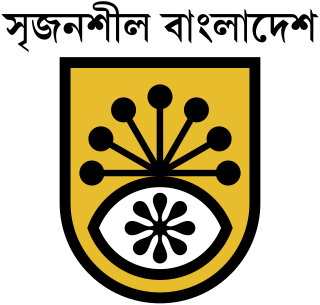
Bangladesh Shilpakala Academy or simply known as Shilpakala Academy is the principal state-sponsored national cultural centre of Bangladesh. It is a academy of fine and performing arts.

Jasimuddin, popularly called Palli Kabi, was a Bangladeshi poet, lyricist, composer and writer widely celebrated for his modern ballad sagas in the pastoral mode. Although his full name is Jasim Uddin Mollah, he is known as Jasim Uddin. His Nakshi Kanthar Math and Sojan Badiar Ghat are considered among the best lyrical poems in the Bengali language. He is the key figure for the revivals of pastoral literature in Bengal during the 20th century. As a versatile writer, Jasimuddin wrote poems, ballads, songs, dramas, novel, stories, memoirs, travelogues, etc.

The Bangla Academy is the official regulatory body of the Bengali language in Bangladesh. It is an autonomous institution funded by the Government of Bangladesh that fosters the Bengali language, literature and culture, works to develop and implement national language policy and conducts original research in Bengali. Established in 1955, it is located in the Burdwan House in Shahbagh, Dhaka, within the grounds of the University of Dhaka and Suhrawardy Udyan. The Bangla Academy hosts the annual Ekushey Book Fair.
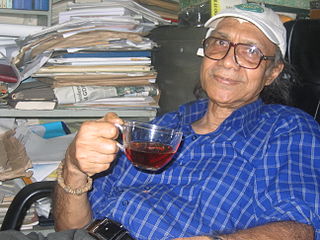
Abdul Mannan Syed was a Bangladeshi poet, and critic. He is known for his considerable research works on Kazi Nazrul Islam, Jibanananda Das, Farrukh Ahmad, Syed Waliullah, Manik Bandyopadhyay, Bishnu De, Samar Sen, Roquiah Sakhawat Hossain, Abdul Ghani Hazari, Muhammad Wajed Ali, Prabodh Chandra Sen. From 2002 to 2004, he held the position of Executive Director of Nazrul Institute.

The culture of Bengal defines the cultural heritage of the Bengali people native to eastern regions of the Indian subcontinent, mainly what is today Bangladesh and the Indian states of West Bengal and Tripura, where they form the dominant ethnolinguistic group and the Bengali language is the official and primary language. Bengal has a recorded history of 1,400 years. After the partition, Bangladeshi culture became distinct from the mainstream Bengali culture, thus their culture evolved differently, still there are many commonalities in Bangladeshi culture & West Bengali culture which connects them both together as Bengali culture.

Tofail Ahmed was a well-known Bangladeshi researcher of Folk Art. He was also a collector of Folk artifacts and has authored several books on Bangladeshi Folk arts and Crafts. He was awarded the Shilu Abed Karushilpa Award for his contribution to Folk Arts and Craft in 1998. He was also elected as an honorary fellow of the Bangla Academy in 2001.

Nakshi kantha, a type of embroidered quilt, is a centuries-old Bengali art tradition of the Bengal region, notable in Bangladesh and Indian states of West Bengal, Tripura and part of Assam. The basic materials used are thread and old cloth. Nakshi kanthas are made throughout Bangladesh, primarily in the areas of Mymensingh, Jamalpur, Bogra, Rajshahi, Faridpur, Jessore, and Chittagong.
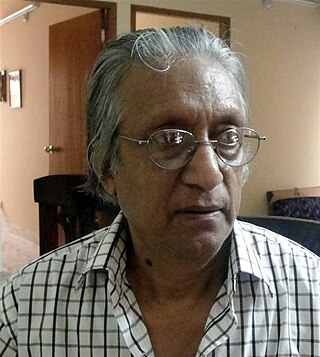
Abdus Shakoor is a Bangladeshi painter and calligrapher.
Nakshi Kanthar Math is a dramatized Bengali verse narrative written by poet Jasimuddin published in 1928.

Bijori Barkatullah is a Bangladeshi television actress and dancer.
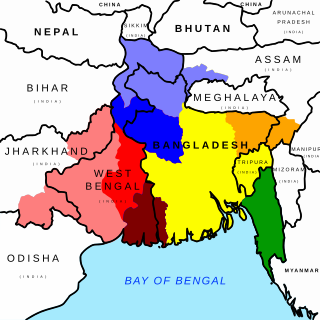
Bangladeshi art is a form of visual arts that has been practiced throughout the land of what is now known as Bangladesh. Bangladeshi art has a perennial history which originated more than two thousand years ago and is practiced even to this date. Among the various forms of Bangladeshi art, photography, architecture, sculpture and painting are the most notable.

Theatre in Bangladesh is believed to have its origin in the 4th century AD in the form of Sanskrit drama. The conquest of Bengal by the Gupta dynasty led the ingress of the northern Indian culture into the ancient Bangladeshi culture which eventually introduced the tradition of theatre in Bangladesh. At present, apart from the Sanskrit theatre, the influence of the European theatre and the indigenous folk culture can also be seen in the theatre art of Bangladesh.
Laila Hasan is a Bangladeshi choreographer, dancer and actress. She was awarded Ekushey Padak in 2010 for her contribution to art by the Government of Bangladesh.
Ustad Gul Mohammad Khan (1876–1979) was a Bangladeshi musician. He was awarded Ekushey Padak in 1977 by the Government of Bangladesh.
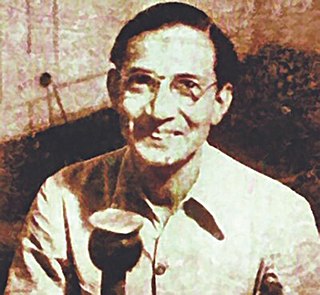
Abbasuddin Ahmed was a Bengali folk song composer and singer born in the Bengal province of British India. He was known for Bhawaiya folk song which is a style commonly found in Rangpur, Undivided Goalpara district and Cooch Behar.
Rahija Khanam Jhunu was a Bangladeshi dancer. She was awarded the Ekushey Padak in 1990 by the government of Bangladesh.
Zeenat Barkatullah was a Bangladeshi dancer and television actress. She received Bachsas Awards, Bangladesh Cultural Society Lifetime Achievement Award and Natyashabha Award for her contributions to the field of dance.
Jago Art Center is the oldest dance training center and organization in Bangladesh. It was established in 1959 by Bangladeshi Gawhar Jamil. Since its inception, Jago Art Center has made significant contributions to the dance industry in Bangladesh. The Jago Art Center works in both dance education and performance. They have sub-centers in the United States. Dance is performed internationally through this sub-center. In Dhaka, the institute is known as a dance training center.
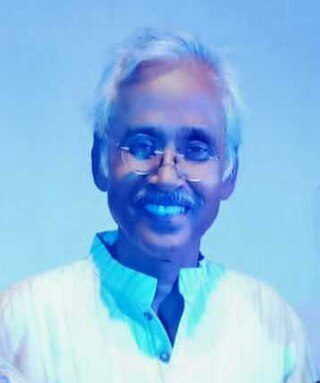
Saju Ahmed is a Bangladeshi Kathak dancer. He received the Shilpakala Padak award from Bangladesh Shilpakala Academy in 2022 for his contributions to dance.
References
- ↑ "HISTORY OF RHYTHM, IN PIXELS". The Daily Star. 2016-06-11. Retrieved 2020-12-28.
- 1 2 3 4 Islam, Sirajul; Miah, Sajahan; Khanam, Mahfuza; Ahmed, Sabbir, eds. (2012). "Mannan, Gazi Alimuddin". Banglapedia: the National Encyclopedia of Bangladesh (Online ed.). Dhaka, Bangladesh: Banglapedia Trust, Asiatic Society of Bangladesh. ISBN 984-32-0576-6. OCLC 52727562. OL 30677644M . Retrieved 29 September 2024.
- ↑ "Dancer, actress Zinnat Barkatullah moved to intensive care in 'critical condition'". bdnews24.com. Retrieved 2020-12-28.